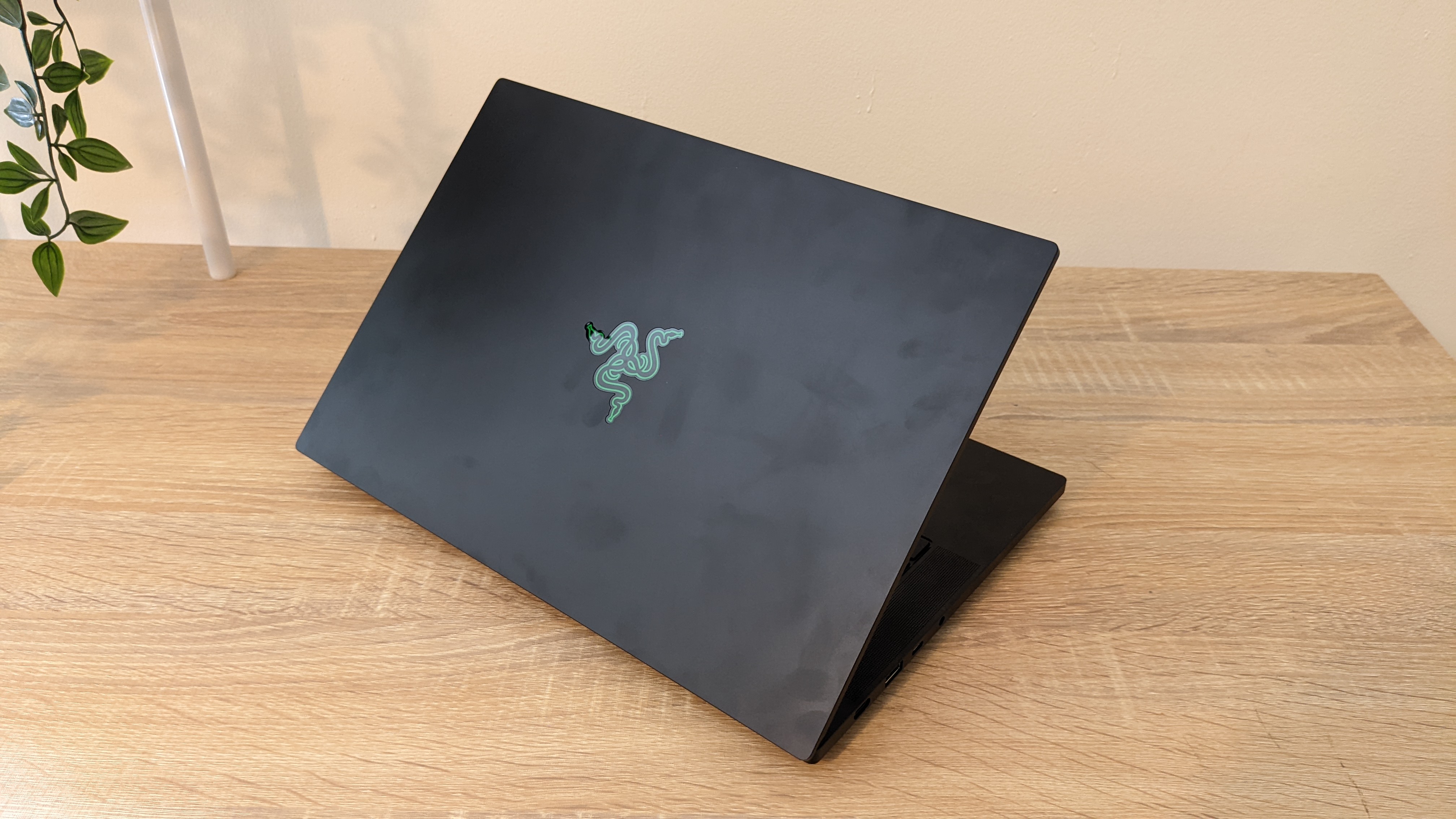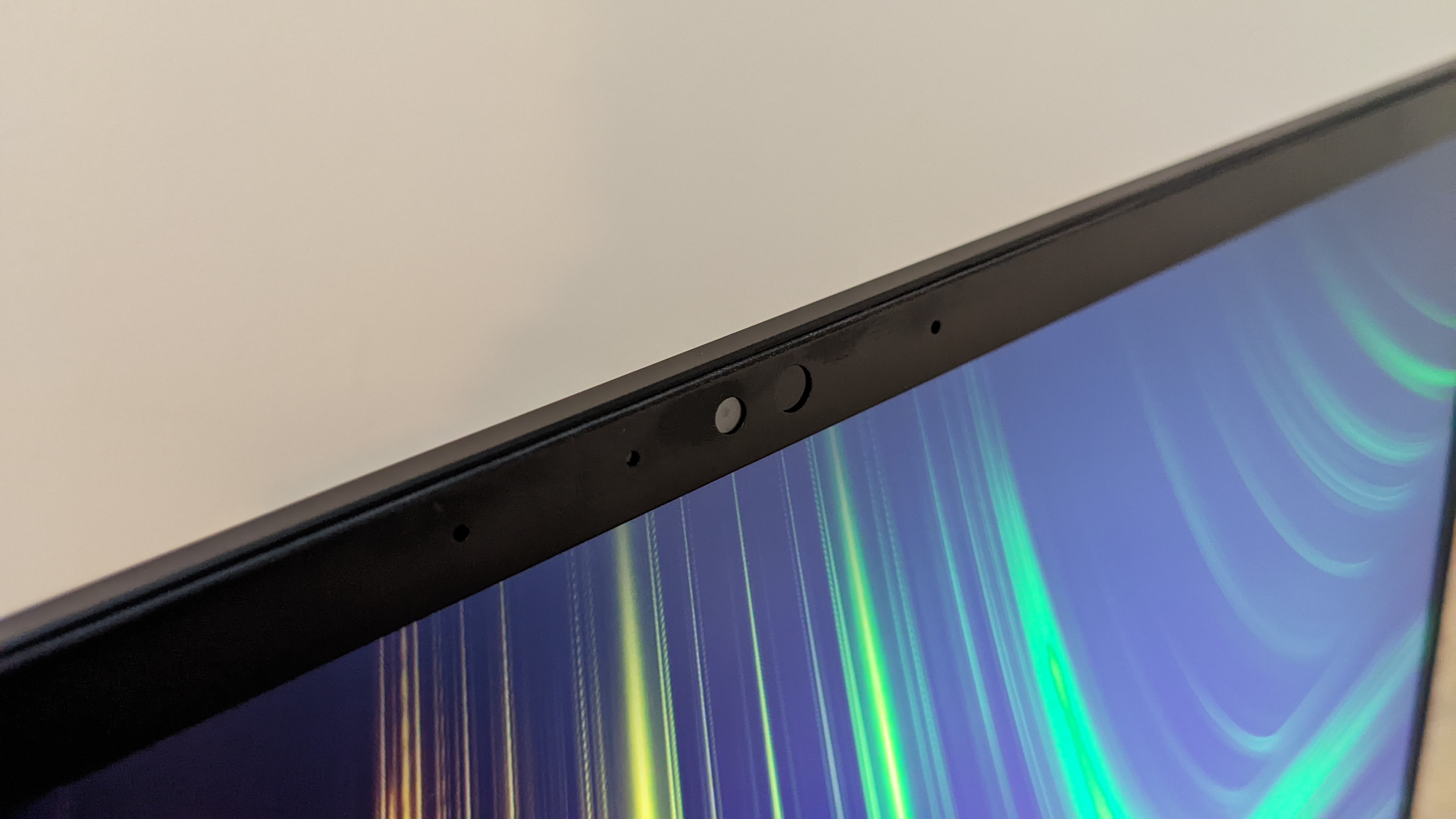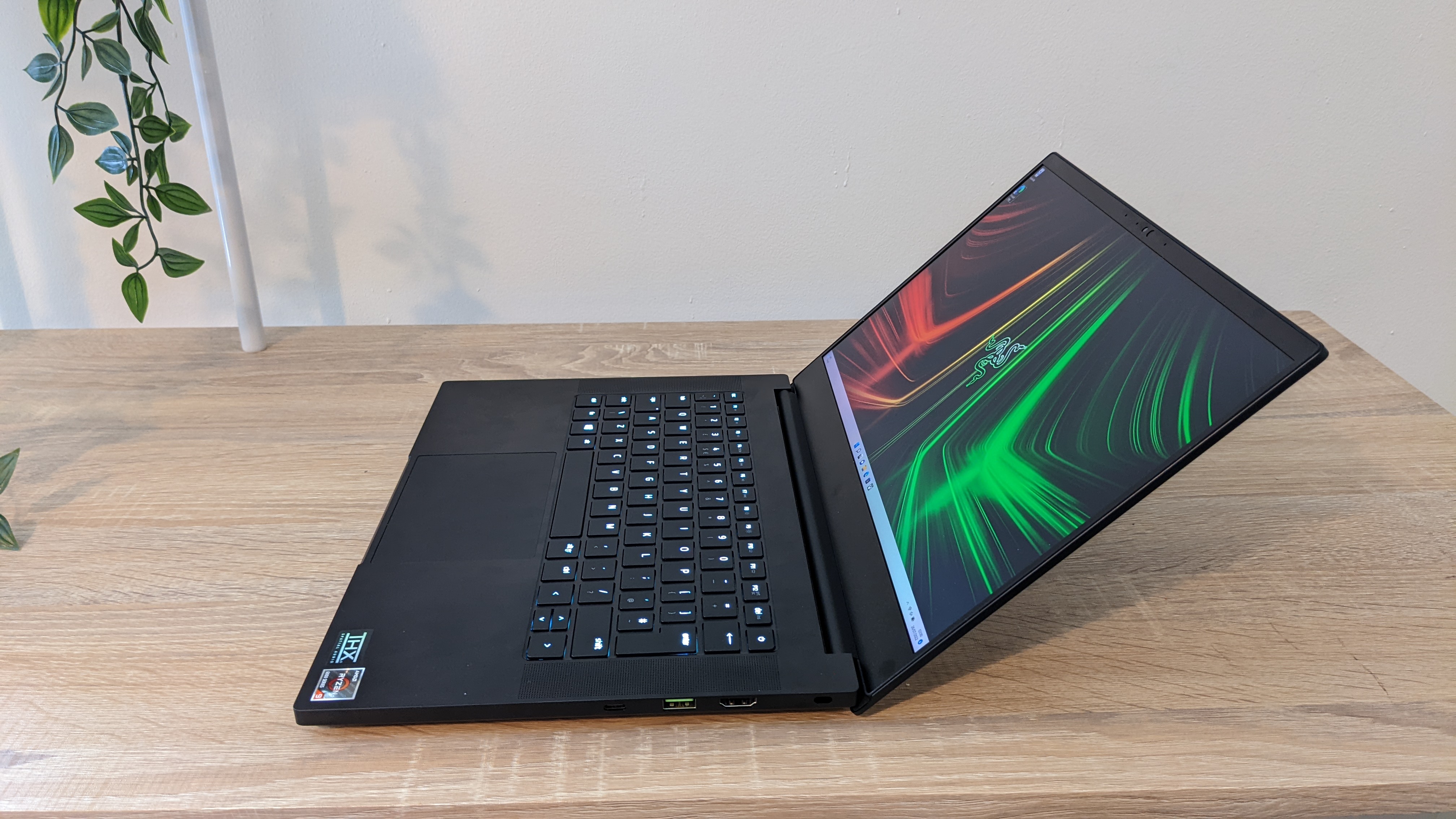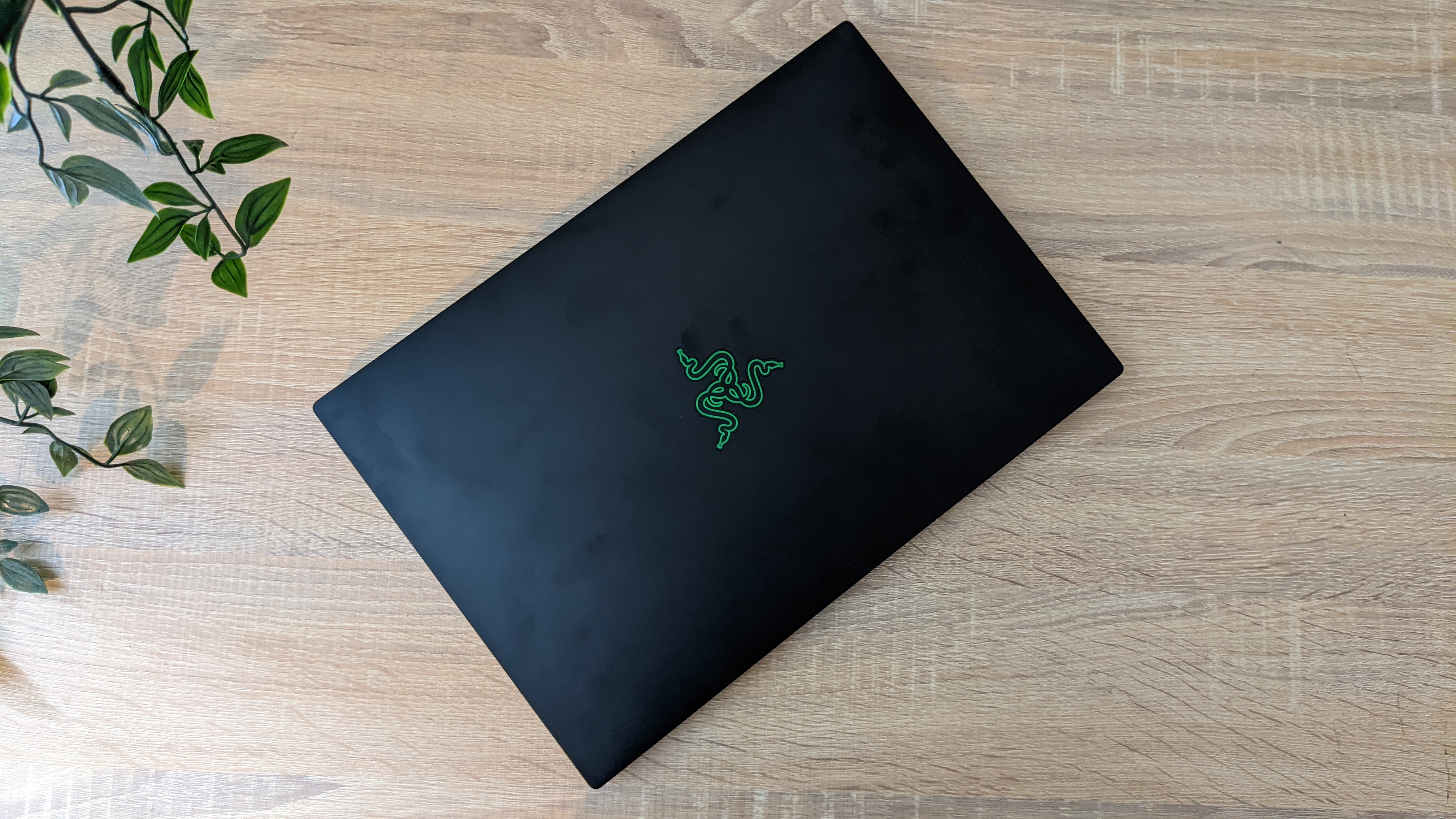Razer Blade 14: Two-Minute Review
I wish I could recommend the Razer Blade 14 to everyone. It’s long been one of the best gaming laptops around for those who prefer portability over power – although the new 2022 model is certainly not lacking in the latter department. It’s a beautiful little piece of hardware with exceptional build quality, and it truly feels like a joy to use.
So why can’t I always recommend it to anyone hunting for a compact gaming laptop? Well, there are a few small criticisms to make here; the RAM is soldered in place, so you can’t upgrade it further down the line, and the small form factor means that some of the keys are a bit squished together, but the only thing that really stops me from singing its praises to anyone who will listen is the price.
Yes, I shouldn’t be shocked: this is a piece of Razer hardware, and the serpentine hardware brand isn’t exactly known for its budget laptops. But the $2,600 asking price for this Razer Blade 14 still had me blinking in surprise; it’s a significant asking price, even if the product itself is pretty close to perfect.
Still, if you can stump up the cash, this is perhaps the best compact gaming laptop you can buy right now – its only real competition is the Asus ROG Zephyrus G14, which is admittedly pretty great, but that’s a slightly more affordable and lower-powered unit when you compare it to this RTX 3070 Ti-equipped Blade 14.
Gaming performance here is unsurprisingly excellent given the internal components, but what really blew me away was how quiet and cool this little unit ran, even while powering through demanding benchmarks and the latest games. I don’t think it’s quite the coolest gaming laptop I’ve ever reviewed, but I was seriously impressed.
Of course, great performance in games is nothing without a good display to play those games on, and the Razer Blade 14 has that too. The screen on this review unit is a 1440p 165Hz panel, which Razer guarantees are individually factory-calibrated. The density of color and sharpness of contrast are incredible, putting many gaming laptops to shame and ensuring that this laptop is a competent tool for content creation work too.
If you want a strong gaming system that you can easily throw in a backpack and take on the go, the Razer Blade 14 is a stellar pick. The above-average battery life further enhances this laptop’s portability, making this one of the best laptops on the market right now.

Razer Blade 14: Price and Availability
- Price range of $2,000 to $3,500
- Version tested costs $2,600
- Range of bundles available from Razer – also comes in pink!
Spec Sheet
Here is the Razer Blade 14 configuration sent to TechRadar for review:
CPU: AMD Ryzen 6900HX
Graphics: Nvidia GeForce RTX 3070 Ti
RAM: 16GB DDR5-4800
Screen: 14-inch 2560×1440, 165Hz
Storage: 1TB PCIe Gen4 SSD
Ports: 2x USB-A 3.2 Gen 2, 2x USB-C 3.2 Gen 2, 1x HDMI 2.1, combi audio jack
Connectivity: Wi-Fi 6E, Bluetooth 5.3
Camera: 1080p IR webcam
Weight: 1.78 kg
Size: 1.7 x 32.0 x 22.0 cm
At $2,600 (£2,700, AU$4,699), this model of the Razer Blade 14 sits roughly in the middle of the available versions, which span from an RTX 3060 all the way up to a powerhouse RTX 3080 Ti model. Most other components remain the same; the Ryzen 9 6900HX processor and 16GB of DDR5 RAM are ubiquitous, and only the RTX 3060 model has a different display (a 144Hz FHD panel as opposed to the 165Hz QHD one found in our review unit).
It’s not cheap; I ran the numbers, and you can build a desktop PC with comparable components to this Blade 14 for under $1,500 right now – and that’s with the still-inflated pricing of the RTX 3070 Ti. Obviously a laptop is always going to be more expensive than a desktop, but there are plenty of cheaper laptops packing the same GPU from MSI, Asus, and Gigabyte.
There is one key factor though: the Razer Blade 14 is basically the only 14-inch laptop you can buy right now with this GPU, making it officially the most powerful compact gaming machine on the market. If you want high-powered gaming performance in a diminutive frame, this is the best option out there – at least, until other manufacturers catch up.
- Price and availability: 3/5

Razer Blade 14: Design
- Stylish but robust aluminum chassis
- Good selection of ports
- Display is fantastic
I’ll be honest: the 2022 Razer Blade 14 doesn’t really look any different from previous iterations. That’s not a bad thing, though! The Blade chassis has become iconic, a signature look that defines the Razer laptop brand, and for good reason – the design is clean but eye-catching, with little decoration beyond a Razer logo on the lid and a brightly glowing RGB keyboard.
The entire body is cut from machined aluminum and painted black, which means that it’s highly durable (if a bit of a magnet for fingerprints). Holding it in my hands, everything about the Blade 14 screams ‘good build quality’. The screen hinge has very little wobble, and there’s virtually no flex in the keyboard frame at all.
The 14-inch display means that the keyboard doesn’t have much room to breathe, a problem that isn’t helped by the twin speaker grilles on either side of it. The stereo speakers of the Razer Blade 14 are actually pretty good, but their presence means that the keys on the far right and far left of the keyboard are somewhat truncated, which takes a little bit of getting used to – especially if you’ve got big ol’ hands like me.
The trackpad is a different story; a wide, responsive rectangle made with glass for silky-smooth finger travel and a satisfying, weighty click. Every Blade laptop has one of these bad boys now, and they’re always a pleasure to use.
Physical connectivity here is good, with two USB-A and two USB-C ports joined by an HDMI output for connecting a second screen. There’s no Ethernet port, so you’ll be reliant on Wi-Fi here, but that shouldn’t cause any issues for most users. If you open up the chassis, the 1TB SSD can be swapped out but the RAM is soldered in place, so no memory upgrades here.
Lastly, there’s the screen. Oh, the screen; almost every Blade that Razer produces has a damn fine display, and this one is no exception. A 165Hz refresh rate makes it well-suited to esports games where frame rate is the number-one priority, and up to 100% DCI-P3 color reproduction makes it amazing for digital art and photo editing too. It’s a lovely display for a lovely laptop.

Razer Blade 14: Performance
- Can hit 60+fps at 1440p in most games
- CPU performance is good and SSD is fast
- Runs impressively cool and quiet
Benchmarks
Here’s how the Razer Blade 14 performed in our suite of benchmark tests:
3DMark Night Raid: 44,947; Fire Strike: 10,704; Time Spy: 9,238
Cinebench R20 multi-core: 4,732
GeekBench 5: 1,499 (single-core); 6,985 (multi-core)
PCMark 10 (Modern Office): 6,911
PCMark 10 (Battery life test): 7 hours and 52 minutes
TechRadar Battery Life Test: 8 hours and 21 minutes
Total War: Warhammer III (1440p, Ultra): 48 fps; (1440p, Low): 104 fps
Cyberpunk 2077 (1440p, Ultra): 43 fps; (1440p, Low): 89 fps
Dirt 5 (1440p, Ultra): 62 fps; (1440p, Low): 115 fps
The RTX 3070 Ti GPU at the heart of this laptop doesn’t perform quite as well as its full-fat desktop counterpart, but it’s still an extremely solid choice of graphics card – to the point where we’d argue that the 3080 Ti model of the Razer Blade 14 is a bit redundant given that it doesn’t have a 4K screen.
Gaming at 1440p is great, with many games able to clear 60 frames per second at maxed-out graphical settings. Those that can’t only require some minor adjustments (such as dropping your graphics preset from Ultra to High) to clear the 60fps barrier. This is without using Nvidia DLSS to upscale from 1080p resolution too, so better performance is possible.
Ray-tracing is very much on the table, especially when assisted by DLSS. The Cyberpunk 2077 RTX benchmark cleared 60fps by turning on DLSS at 1440p and dropping the texture detail to Medium, but was still fully playable at Ultra settings.
CPU performance from the AMD Ryzen 9 6900HX – currently a popular choice of gaming laptop processor – is good across the board, though it doesn’t quite reach the highs of Intel’s competing i9-12900H thanks to the latter’s innovative efficiency cores handling background processes while you game. SSD speed is super-fast; games load quickly and internal file transfers take seconds.
What impressed me the most was just how quiet the Blade 14 was while running through our gauntlet of performance tests. Compared to my own Acer Nitro gaming laptop, which can sound like a wind turbine, the dual fans on this Blade made barely more than a gentle whirr throughout.
The keyboard did get a little warm after extended use, but the internal components still ran cooler than much bigger laptops with louder fans, so I don’t know what kind of cooling wizardry Razer is employing here – especially since larger Blade models have historically had some issues with thermal performance. Out of curiosity, I ran the Cinebench R20 benchmark a few extra times off an external hard drive, and the drive disk spinning somehow made more noise than the laptop itself.

Razer Blade 14: Battery Life
- Decent longevity despite the small battery and powerful components
- Around 8 hours of general use
- Around 3-4 hours of gaming
Considering that the 61.6Whr battery in the Razer Blade 14 is smaller than those found in many gaming laptops, it did a good job in our battery life tests. Playing a looped video at 50% brightness gave us over eight hours of battery life, which is not bad at all considering how powerful the internal hardware is.
If you’re looking to game on the go, you’ll need to switch off the RGB lighting and dial down the brightness from maximum, but you should be able to squeeze up to 4 hours of game time on a full charge. The included AC adaptor isn’t too bulky and charges the laptop pretty fast, but Razer still insists on using a proprietary charging port, so the Blade 14 loses one point for that.
Buy it if…
Don’t buy it if…
Also consider…
First reviewed July 2022
We pride ourselves on our independence and our rigorous review-testing process, offering up long-term attention to the products we review and making sure our reviews are updated and maintained – regardless of when a device was released, if you can still buy it, it’s on our radar.




